- March 3, 2022
- Posted by: Shane Daly
- Category: Trading Article
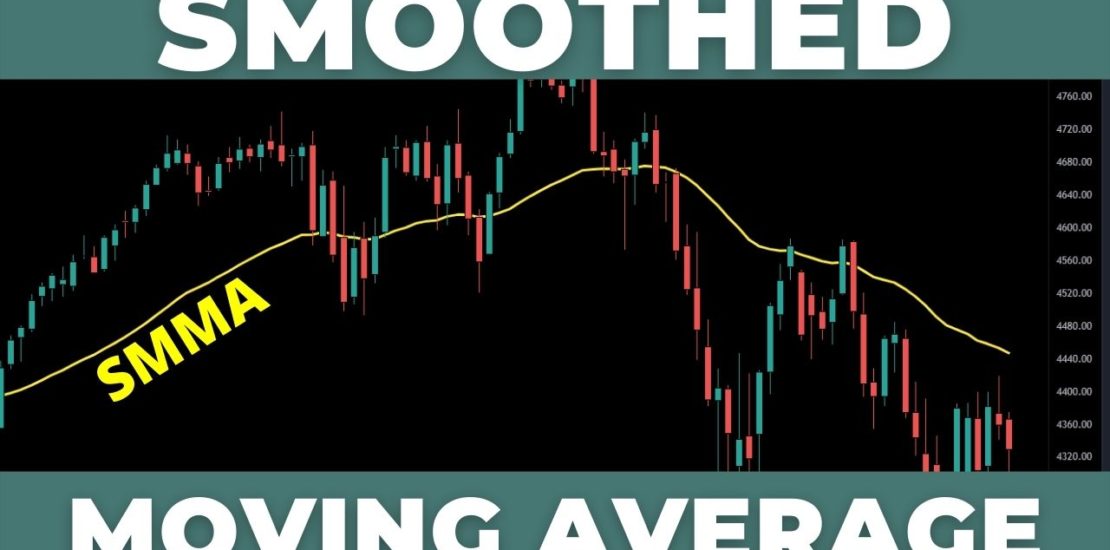
The smoothed moving average is like the exponential moving average on steroids. Using a combination of the SMA and an EMA, recent price movement is given the same weight (generally) as historic data. While other moving averages eventually lose past data, the SMMA does not. The past data is given less weight in the calculation but is never forgotten. For traders who like less noise in their indicators, the SMMA does a better job than the SMA in doing so.
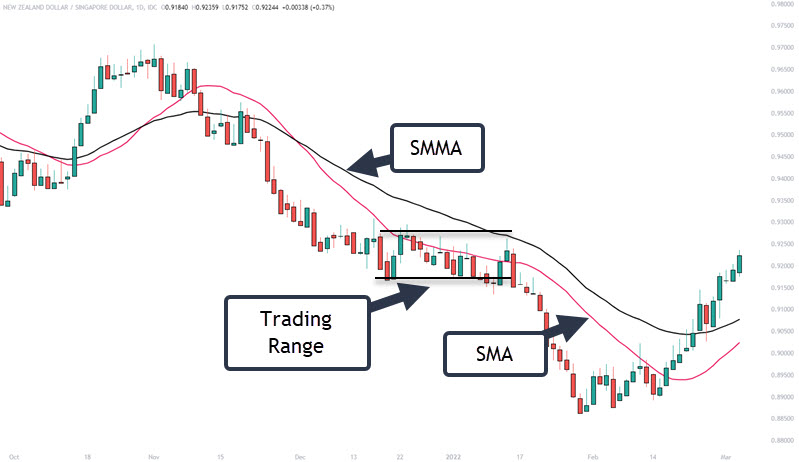
This price chart has a 20 period simple moving average and a 20 setting on the smoothed moving average. The SMMA is not as affected by short-term fluctuations in price such as the trading range in the middle. You can also note that traders that use price crossing an average as trend direction, the SMA has given a few crosses that failed. The short-term volatility does not affect the SMMA the same way and price crossed the SMMA and held the new price.
Formula For The Smoothed Moving Average
The formula for the SMMA is a little more complex than the SMA.
The first step is to calculate the first value and is a SMA calculation
SUM1 = SUM (CLOSE, N)
THEN
SMMA1 = SUM1/ N
The second, and all other moving averages that are plotted, are calculated using this formula:
SMMA (i) = (SUM1 – SMMA1+CLOSE (i))/ N
N – is the period used for smoothing
SUM1 – total sum of closing prices for N periods
SMMA1 – smoothed moving average of the first bar
SMMA (i) – smoothed moving average of the current bar (except the first one)
CLOSE (i) – is the current closing price
The default setting for N is 9.
How To Use The SMMA
The smoothed moving average is not used much differently than a standard average such as the EMA or the DEMA. What we are talking about is preference but with the smoothing feature, some longer term traders may find utility in it.
When considering it for trend determination, while it may strip out erratic price moves because of the weighting factors, it will react slower to true changes in price. Depending on the time period you choose, the SMMA could be giving signals long after price has.
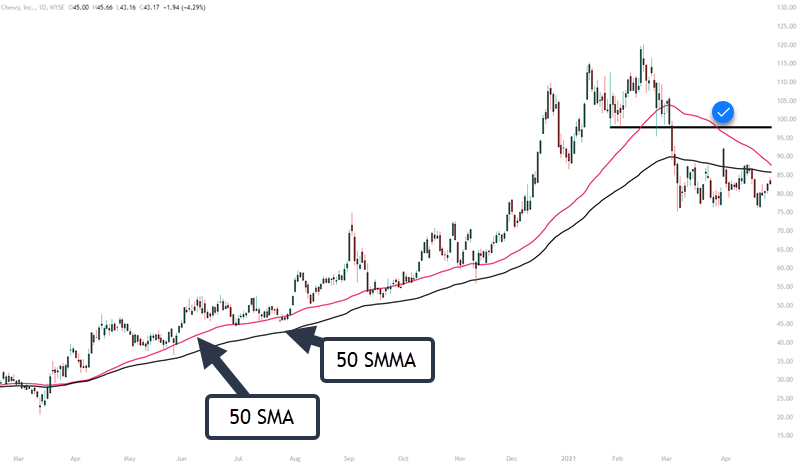
During this uptrend, we see no violations of the 50 SMMA. Both moving averages did a good job of showing a steady uptrend with the exception of a few breaks of the 50 SMA. The real issue, is on the right side of this chart.
Price clearly showed momentum in an upward trend which is obvious by the large impulse swings. Price puts in a lower low at the black line which signals, at the least, a potential trading range. The 50 SMA is broken with authority but due to the smoothing of the SMMA indicator, the signal for a trend change is delayed.
Adjust Time Period
We can speed up the indicator by setting a smaller period. What is the best setting? There isn’t a best and spending your time looking for a perfect setting is a waste of time. Focus more on strategy design and risk protocols.
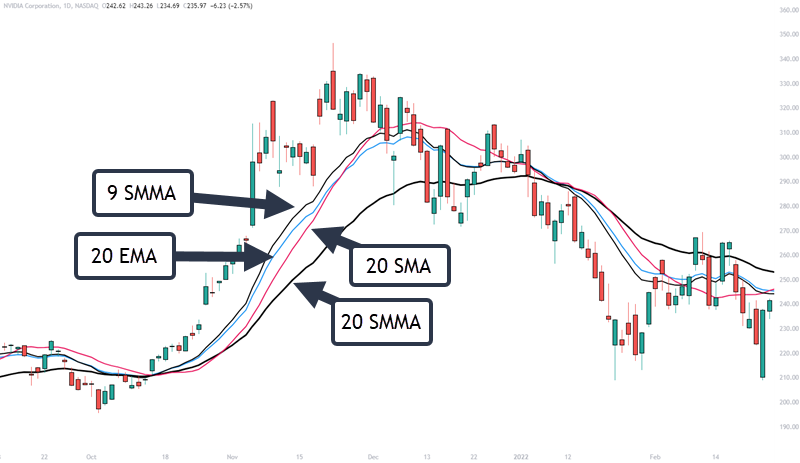
Looking at this chart, we can see a few things of interest:
+ 9 SMMA and 20 EMA track fairly close to each other
+ 20 SMA catches up to price and the other two averages near the top as price consolidates
+ 20 SMMA stays far from price during the trending move but at one point, all averages converge
Do these differences, even the more subtle ones, make a big difference in your success? If you read other posts on the internet, it can spell the difference between a winning and losing strategy.
Don’t believe everything you read. It takes much more to succeed in trading than a trading indicator setting.
Longer Period = More Difference
Due to the formula of the SMMA, the larger the period setting, the further it will deviate from another average with the same setting.
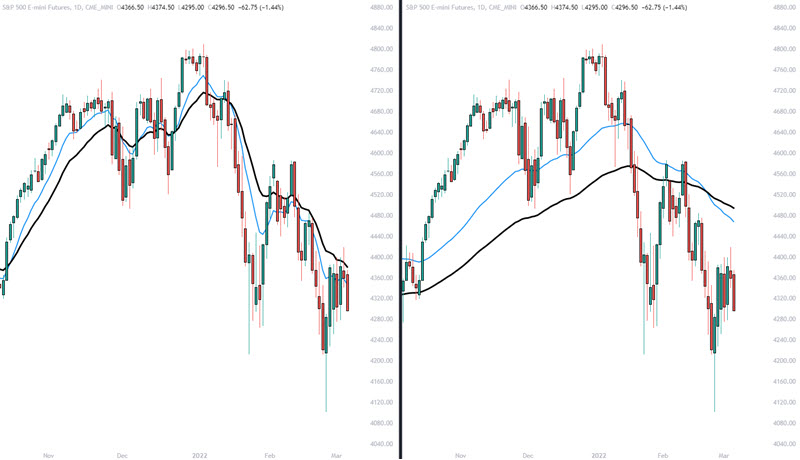
On the left, we have a 10 EMA and a 10 SMMA. On the right, the settings are changed to 50. Notice how the distance between the two averages is larger when using a larger period setting. This is something to be aware of when choosing not only the setting, but also the average you will use. Remember, the SMMA will take into consideration all available price data.
Trading Truth For All Indicators
When we are talking about indicators that are tracking, on average, close to each other, with a robust strategy it should have minimal impact on results. If your strategy does well with an EMA but fails with a SMMA, you should double check your testing methods. It is no different when considering small changes in periods. A 20 period EMA or a 21 EMA should have no difference in your strategy.
Summary
The use of the smoothed moving average is no different than any other average. The calculation is slightly more complex than a simple average but complexity does not equal success.
The smoothed moving average has some of the benefit of an EMA with recent price weighted more. It also uses all available data albeit the further back in time, the less relevant to the present calculation.
Is the SMMA better than an EMA? They are both are in the same general vicinity on a price chart when using the same period unless using a higher period.
The real question is how good are you are reading price action? The SMMA is just showing you a smoothed average price over time. Personally, I have no reason to use anything but an EMA or SMA for my trading approach. You will find a multitude of moving averages in your charting platform. Instead of obsessing over the best one, just pick one that fits your eye, one that looks good on your chart.
Further Resources
This was an overview of the SMMA. It can be used the same as any other moving average in a strategy. You may find the following useful:
